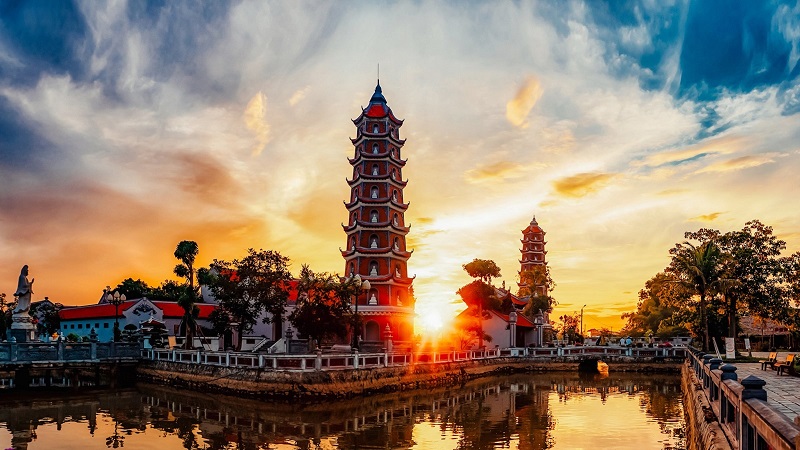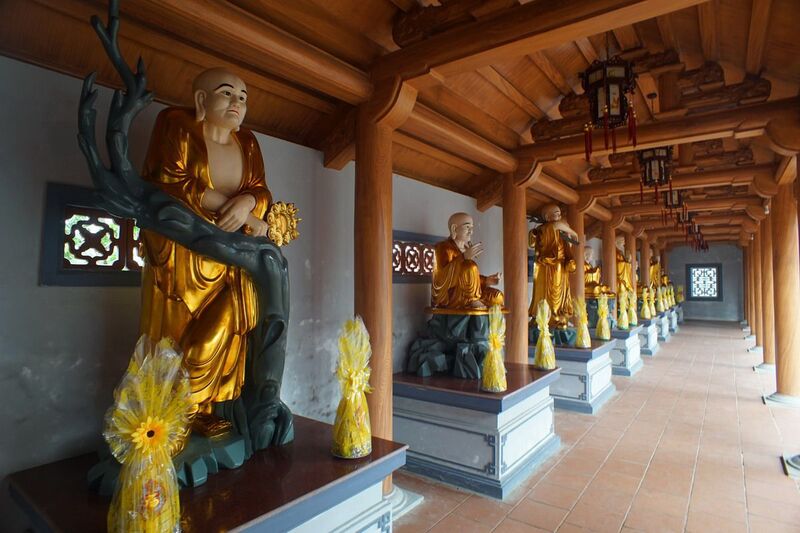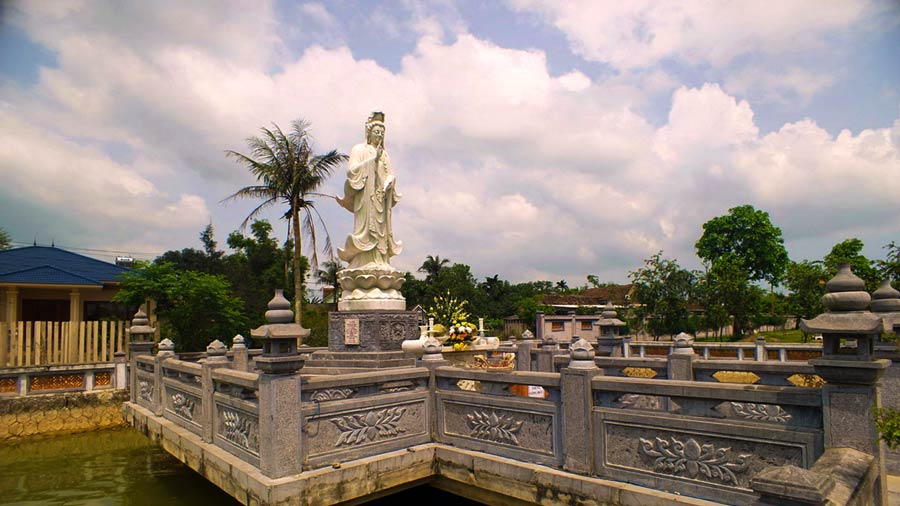Hoang Phuc Pagoda
1. Overview
Hoằng Phúc Pagoda (Vietnamese: Chùa Hoằng Phúc) is one of the oldest and most historically significant Buddhist temples in Quảng Bình Province, Vietnam. Located in Mỹ Thủy commune, Lệ Thủy District, the pagoda has a history spanning over 700 years, making it a treasured spiritual site for both locals and pilgrims. Surrounded by peaceful countryside and near the Kiến Giang River, Hoằng Phúc offers visitors a chance to connect with both Vietnamese Buddhist heritage and the region’s natural beauty.
2. Historical Background
The pagoda was originally constructed in the 13th century, during the Trần Dynasty, under the name Tri Kiến Temple (Chùa Tri Kiến). Over centuries, it underwent several name changes and restorations. In 1716, during a visit by Lord Nguyễn Phúc Chu, it was renamed Kính Thiên Tự, and finally, during the Later Lê Dynasty, it was renamed Hoằng Phúc Tự, which remains its official name today.
Despite being severely damaged during wars and natural disasters, the pagoda’s spiritual and cultural legacy remained alive in the hearts of locals. In 2016, the temple was restored and inaugurated with a large ceremony attended by government officials, Buddhist dignitaries, and thousands of devotees, reviving its role as a central place of worship in Quảng Bình.
3. Architectural Features
The newly restored Hoằng Phúc Pagoda blends traditional Vietnamese architecture with modern Buddhist aesthetics, creating a serene and majestic atmosphere. Key architectural highlights include:
-
Tam Quan Gate: The three-entrance gate symbolizes the passage from the secular world into the sacred. It features intricate carvings and classical Vietnamese roof tiles.
-
Main Worship Hall (Chánh Điện): This grand structure is home to statues of Shakyamuni Buddha, Amitabha, and Bodhisattvas, placed on elaborately decorated altars. The hall is spacious and adorned with carved wooden beams and Buddhist symbols.
-
Stupa and Bell Tower: A striking stone stupa stands in the courtyard, representing wisdom and the relics of the Buddha. The nearby bell tower houses a large bronze bell used during ceremonies.
-
Large Courtyard and Gardens: Visitors can enjoy walking through open courtyards, beautifully maintained bonsai gardens, and a peaceful reflection pond, adding to the spiritual ambiance.
4. Cultural and Religious Importance
Hoằng Phúc Pagoda is not only a religious structure but also a symbol of resilience and faith in Vietnamese history. Its cultural and spiritual roles include:
-
Place of Worship: The pagoda serves as a central spiritual site for Buddhists in the region, hosting regular ceremonies, prayer sessions, and offerings.
-
Pilgrimage Destination: Thousands of pilgrims and tourists visit Hoằng Phúc every year, especially during the Lunar New Year and Buddha’s Birthday, to pray for health, peace, and prosperity.
-
Revival of Buddhist Heritage: The 2016 reconstruction marked a revival of religious and cultural activities, reestablishing the pagoda as a key Buddhist educational and cultural center in central Vietnam.
-
Symbol of National Unity: The temple has received recognition from Buddhist councils and the government as a symbol of the enduring Vietnamese spirit, having survived wars and natural destruction to continue serving the people.
5. Visiting Information
-
Location: Mỹ Thủy commune, Lệ Thủy District, Quảng Bình Province, Vietnam
-
Opening Hours: Open daily; early morning and late afternoon are ideal for peaceful visits
-
Entrance Fee: Free (donations are welcome)
-
Accessibility: About 40 km south of Đồng Hới City, accessible by car, motorbike, or tour buses
-
Nearby Attractions: Kiến Giang River, historic houses in Lệ Thủy, and the hometown of General Võ Nguyên Giáp
-
Best For: Pilgrims, cultural travelers, historians, and Buddhist practitioners
6. Conclusion
Hoằng Phúc Pagoda stands as a living symbol of Vietnamese Buddhist tradition, having endured through centuries of change and adversity. Whether you're interested in history, spirituality, or architecture, this ancient yet beautifully restored temple offers a profound experience. Its tranquil setting, cultural significance, and spiritual energy make it a must-visit destination in Quảng Bình for anyone seeking peace, inspiration, or insight into Vietnam’s enduring religious legacy.





